[ Last Rewrite: Aug 2023 – ELRS Update! ]
If you’re reading this, you probably saw a cool FPV video not too long ago and thought to yourself: I want that too! Now you want to know what you need to get started (like a complete FPV beginner package, just the best beginner FPV drone) and get started right away.
Then congratulations, you have found the right place. =)
To get you started: Yes, FPV flying is as awesome as it looks! It takes a lot of practice, but once you know how to control your quad, the immersion through the FPV goggles allows for an almost unbelievable flying experience that is unlike anything else.
If you already own a camera drone like a DJI Mavic, nice for you. Then you already know three of four axes on the remote control. But FPV is a whole other level, so you’re almost starting from scratch. Sorry.
In my previous articles on the “Best Beginner FPV Drone,” I always recommended a fixed combination of drone, goggles, and radio. But in the meantime, there are a lot more options for putting together the necessary stuff for different needs — and of course, there are still complete packages that allow you to fly right out of the box.
That’s why I’ve put together four packages for every budget and taste.
Rough breakdown by budget
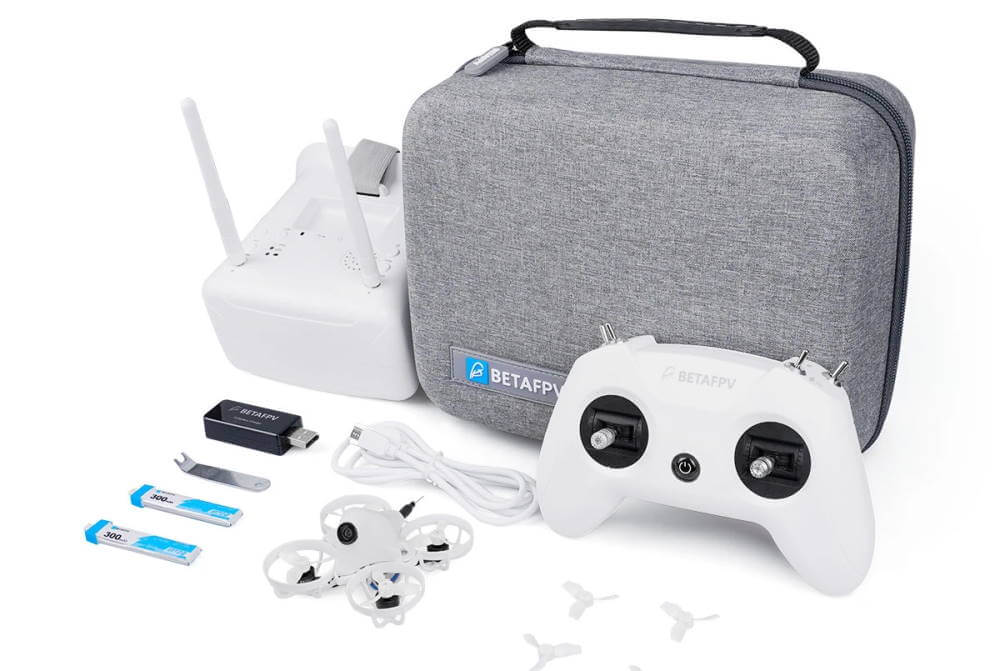
The Tiny Whoop package
The serious start – The affordable variant
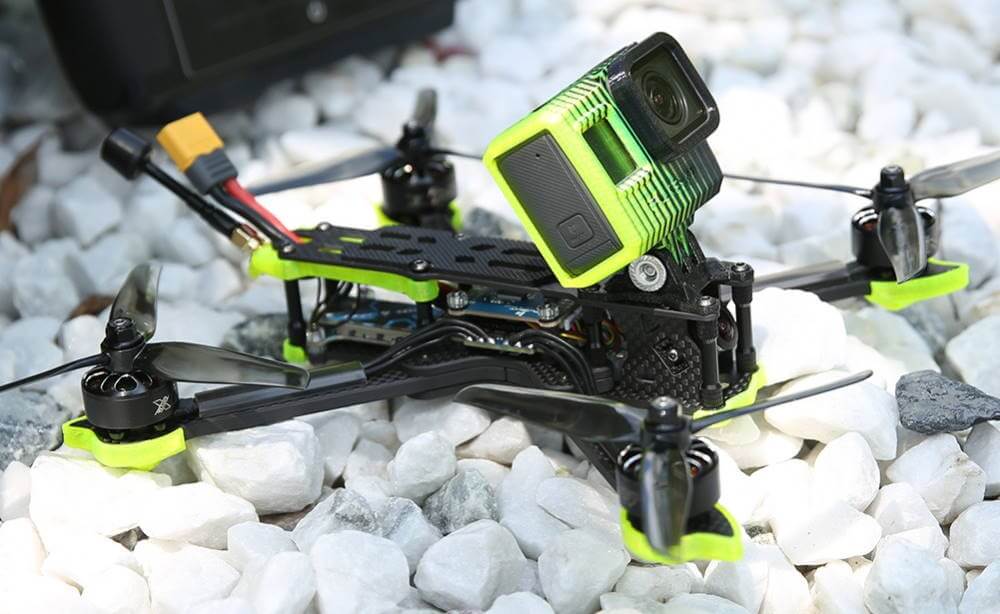

The serious start – The Pro variant
The expensive DJI variant
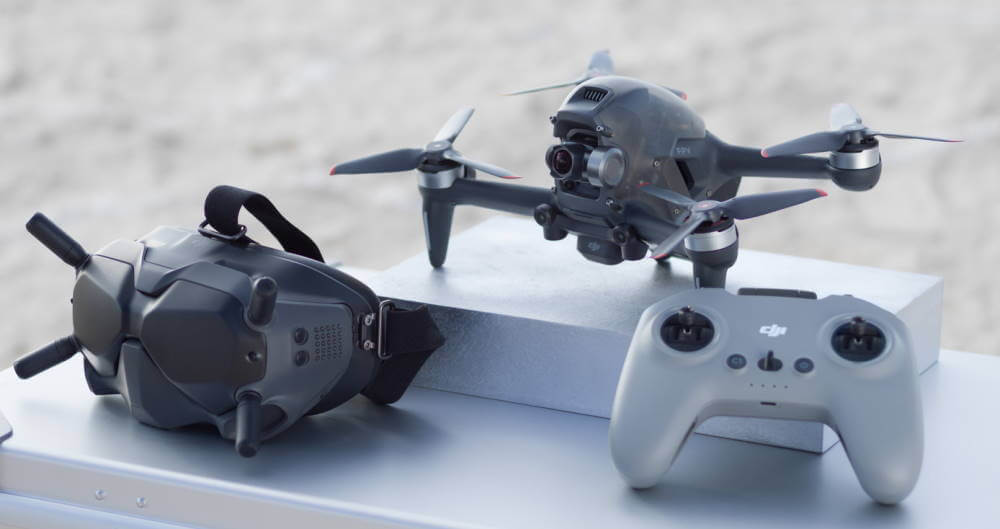
What are the differences in the packages?
In a nutshell: They differ in how much time you have to put in before you can fly, how much money you are willing to spend, and how good the drone is 😉 And if we take a deeper look:
The first package is really a complete FPV beginner package: you buy the complete package, and it has everything in it that you need. The second and third ‘packages’ are individual parts (drone, radio, goggles, accessories). Some steps for connecting the stuff have to be taken. These two are also the ‘serious’ entry into the hobby. Something you were looking for, right?
And last but not least, despite much hate from the FPV community, I will also include the DJI FPV Combo package. Why it is so controversial, and what the advantages and especially disadvantages of this package for FPV beginners are, I will show you later.
The Tiny Whoop complete package
The advantages of this set are obvious: you have a drone, remote, and goggles in one package. You can unpack that and start flying immediately.
When you see the pictures with the Tiny Whoop (that’s this mini drone with the protection around the propellers), you might think it’s a child’s toy. But it’s far from that. This mini quadcopter has a full-fledged flight controller, the component that allows you to perform the flight maneuvers of a real FPV racer.
And I dare say that every serious FPV pilot has at least one Tiny Whoop at home, with which he flies around indoors in winter. With this small drone (only 7 cm edge length and about 25 g), you can fly indoors and even bump into something without remorse. And it’s great to let the kids (or girlfriend 😉 ) fly.
In addition, the tiny ones do not make much noise, which is why you can literally fly them anywhere. Take it to the BBQ with your buddies? Fly in the garden, sitting in the Living Room? No problem. The TinyWhoop variant has the charm in its versatility — and you learn everything you need to fly even larger FPV Racing Drones.
Unfortunately, showing spectacular videos to your friends doesn’t work so well because you can’t save the videos to an SD card with the TinyWhoop. So you can only watch it live via the goggles, but not on the PC or similar. But via a second, inexpensive pair of goggles, you can also let other people watch FPV — and believe me; your friends will celebrate you for that!
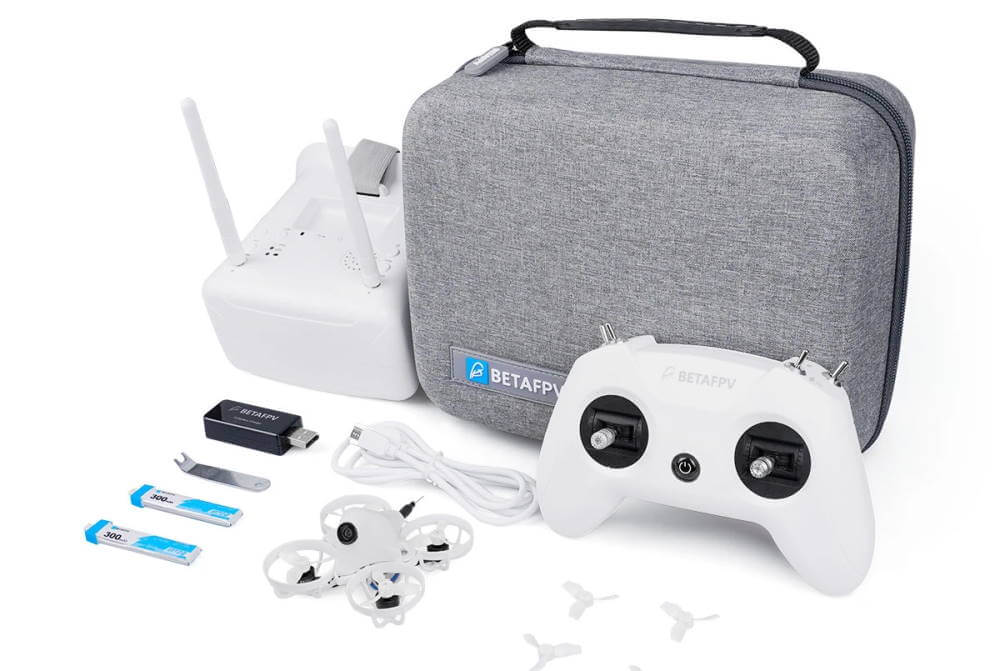
With the complete package, you don’t have the entry hurdle with combining components and can start flying right away — and immediately have an awesome flying experience. There is no need for the “binding” that you know from other FPV drones, which can be really tedious.
And the small Tiny Whoops are controlled just like the big ones: In fact, it’s the same remotes and radio protocols that are being used. If you can master the small one, you can fly a big one. So, the Tiny Whoop is perfect for getting started.
And by the way, you can use the radio remote and goggles included in this package for a larger FPV drone if you want to upgrade.
Prices & Availability:
The serious beginner package — The affordable variant
Okay, this is where it gets serious: A FPV Quad like the iFlight Nazgul is a 5″ drone. This is the “standard size” for FPV racing drones. Here you get the classic flight physics, and you can mount a GoPro or other action cam and make those cool videos you know from YouTube.
Clearly speaking, this is not a “complete package.” It is an assembly list. You still have the task of buying the individual parts and putting (connecting) them together.
Many FPV veterans will say, “Why don’t you get a decent remote and practice with a simulator first to see if that’s for you?” — And they’re definitely not wrong about that. But if you’re like me, you really want to get your hands on something right away.
And you want to keep it affordable. But you should still be aware that you can’t get started right away: A little practice on the simulator is necessary before your first flight (but the simulator works with the radio that I recommend here in the package), and also a little preparation is necessary: Read how to charge the batteries, connect the radio with the drone (binding) and a few things more.
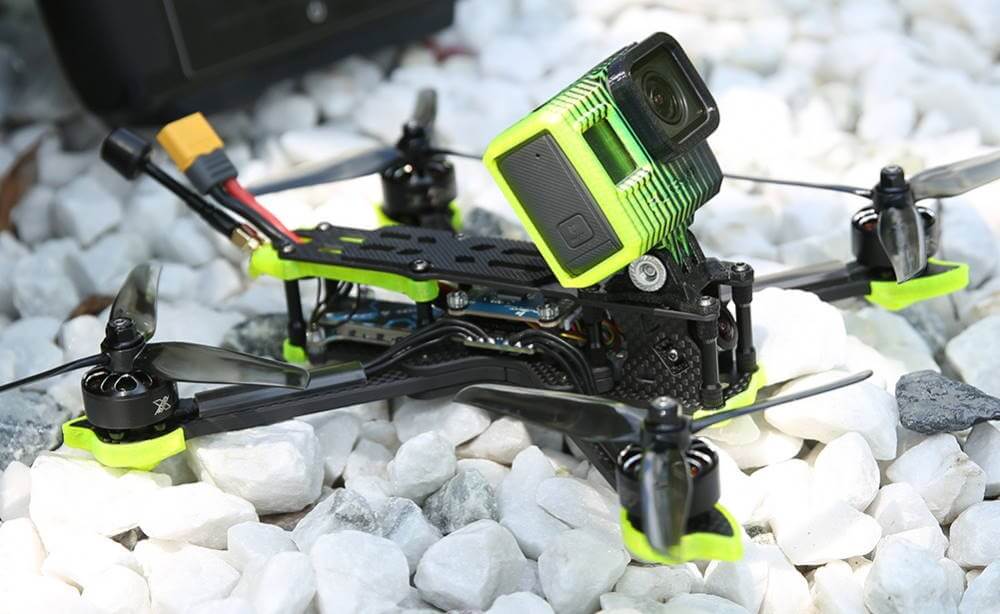
But this package here is the solid base that will get you into the FPV world. All the components are good and really worth the money — and over time, you will crash so hard that you will have to change not only the propeller but also the motor. This is “part of the game,” and even if you can’t imagine it today — you are serious about it, the soldering iron will become your friend for sure. =)
Shopping list – Serious & Cheap
For keeping the costs down, we’ll look at the analog versions of the drones here. The best beginner FPV drone should be nice to your wallet, after all. And analog can be much cheaper than the digital counterpart, while the flight performance stays the same.
For really good videos, you can mount a GoPro on top. Good action cams have their weight, so, a 5 inch (the size of the propellers and the classification) is necessary to carry the bigger cam.
Ever since the extremely critical FPV legend Mr. Steele flew the iFlight Nazgul 5 (although he actually only wanted the camera) and rated it good, there are hardly any dissenting voices. It’s just a good quad. Period. Now other companies caught up and there are a few really good pre-assembled 5-inch.
iFlight Nazgul5
Prices & Availability:
Short info about Banggood: The store with a name that sounds like a porn site may seem a little suspicious to you now — but Banggood is a real player in the FPV sector. And the store is also more reliable than it seems at first.
For Chinese manufacturers (yes, most of the FPV sector is from China), Banggood is THE dealer. If you get into FPV, you will definitely have a lot to do with Banggood. And I’m quite happy with Banggood as a supplier for cheaper stuff so far. The delivery times are long (2-3 weeks is standard), but the prices are very good. And the service is fine. If something doesn’t arrive properly, you often have to upload proof in the form of a video or picture, then you get a replacement sent if you have a legitimate claim. At least that’s how it’s always been for me.
Eachine EV800D (FPV Goggles)
Since we are here for an affordable FPV setup, we’re using an analog signal. Now we are looking for FPV goggles. A good compromise between quality and price is the boxed goggles, i.e., goggles with a large screen that is a bit wider in front of the eyes.
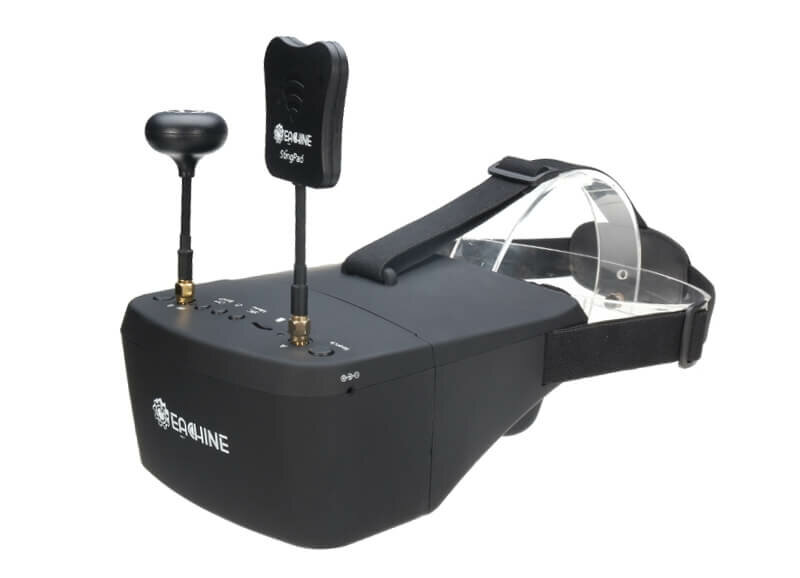
The EV800D model recommended here has a few years under its belt but is still in demand, and for a good reason: diversity receiver for a good picture, a DVR to record the flights (very important to determine the location for recovery after a crash), ease of use, and a nice second life as an external monitor (the “goggle frame” is removable) for guests and when tinkering if you do want to upgrade.
Prices & Availability
Radiomaster Pocket (radio remote controller)
By choosing the radio, you specify which protocol you want to fly with. The radio remote control and the receiver in the racing drone must speak the same language. And in the last year finally an option came up that has it all: Ist called ExpressLRS or short ELRS. It’S cheap, different producers (opensource) reliable and has range.
And Radiomaster (a well known brand for some of the best radios out there) has the remote for FPV Beginners: The Radiomaster Pocket
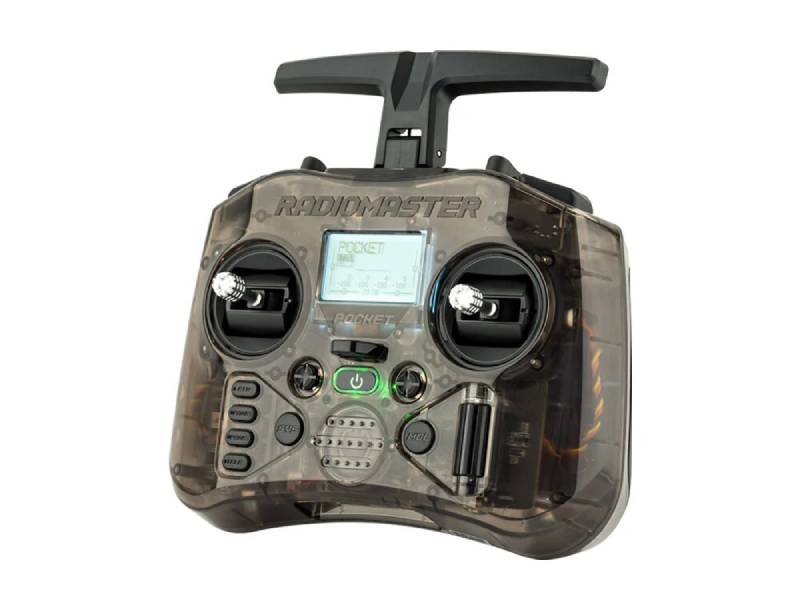
The price is amazing (check out the buttons below), and there are some other things I love about the Pocket. It’s mainly that you can remove the sticks in DJI style, and with that it’s so much easier to transport it. (Transporting Radios is always a pain because you have to protect the stick and so the packaging gets huge). And it has more buttons than you’d expect from a radio in that size and price sector.
One more thing: Almost all remote controls run with “OpenTX” or “EdgeTX”— these are the operating systems and the quasi-standard in the FPV area. Unfortunately, I find it anything but intuitive to use, but since it is so widespread, you can also find a forum post or a YouTube video for every question.
Price & Availability
CHEAPER ALTERNATIVE: BETAFPV LITE RADIO
If you really have to watch every dime, there is anoter cool option: The BetaFPV Lite SE is a real ELRS radio (above from the Whoop package), but without display, and it can only connect to one copter. And it works on the simulator too. =)
My girlfriend still flies the BetaFPV Lite with her current FPV racing drone. I myself have a FrSky X-Lite — mainly because I can fly many different models with it, and I like the “controller style.”
With the two radio remote controllers, however, it should be said that a bit extra work is required here: You have to “bind,” i.e., connect the radio with the quadrocopter or the receiver — and this is unfortunately not as intuitive as it should be. But with a YouTube search and a little patience, you can get there.
Prices & Availability
FPV rechargeable batteries: 3-10x Tattu 1300mAh 4S (14.8V 75C 4S1P)
With real FPV racing drones, you only have very short flight times. Here it is so 3-8 minutes, depending on whether you’re leisurely cruising or “Send it” =)
In the package, we have selected the 4S. So 4 cells per battery. Currently, 6S are also very common (there, you must then also have the motors with suitable Volts on the quad), but the performance advantages for beginners are hardly noticeable. And 6S is just significantly more expensive (both the LiPos and the chargers).

Another important thing: LiPos, i.e., lithium-polymer batteries, is a completely different matter than lithium-ion batteries. Even small damages can make them a fire hazard. Please take the time and read up a bit or watch a video on YouTube on the subject!
Prices & Availability
LiPo Charger: ISDT 608AC Battgo Lipo Charger AC / DC
The battery charger is really cheap when you consider that you get a charger from ISDT, including a detachable power supply (Yes, charger and power supply separately are in FPV what normal). I have it and do not want to miss it anymore. Not the fastest, but very compact and just really mature – as you are used to from ISDT.
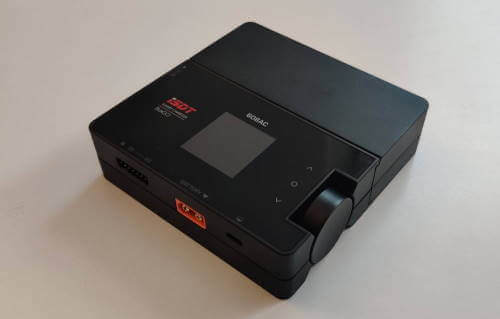
Prices & Availability
Affordable ALTERNATIVE:
I got by for the first few years with a very simple Charsoon “Balance Loader.” It is certainly not so cool for the LiPos, but if every euro counts, you get along with it in any case and your racing drone in the air.
Charsoon DC-4S | Amz | BG | AE
FPV video for YouTube?
However, if you want to impress with awesome FPV videos with this package, you’ll have to add a GoPro. The FPV feed, which you can see on the goggles, is enough to fly (and get your adrenaline pumping) but just too low quality for outsiders (reminiscent of 80s VHS tapes).
However, the Nazgul has more than enough power to move a GoPro through the air — and a suitable mount for the GoPro is already included.
The serious FPV beginner’s package: The “digital” variant
OK. Now we are at the “serious digital variant.” You have to be ready to spend a four-digit amount here. But the visual experience is a completely different dimension to the FPV beginner package above.

Here, we don’t use the “old” analog technology for transmitting the image to the goggles while flying (which is still used in the high-end sector — do not misunderstand) – but here we’re the proprietary digital technology from the ‘camera drone’ top dog company DJI. That said, the drone is from a different company, but the goggles and radio are from DJI.
DJI has brought a product to the FPV racing drone space that has really shaken up the scene, called the ‘DJI Digital FPV System.’ It’s a closed system, meaning you’re largely reliant on DJI’s products, and there’s no alternative — but the digital image is really awesome. DIJ in the FPV world is like Apple to computers: you’re trapped in their world, but the product works very well.
The digital image in the goggles is killer, the range with the DJI system is incredible — and there’s no need for a bunch of configuration and customizing since the radio works out of the box. You don’t have to read into additional things like transmission protocols.
To be fair: There are some new contestants coming up for Digital HD Video in FPV, mainly Fatsharks’s Walksnail and HDZero. But for the ease of use we’ll stick with DJI here.
Shopping List – Serious & Digital
iFligth Nazgul 5 V2 HD 6S
Price & Availability
- iFlight Nazgul5 HD v2 as 6S at Banggood
- iFlight Nazgul5 HD v2 as 6S at Amazon
- iFlight Nazgul5 HD v2 as 6S at AliExpress
FPV goggles and radio: DJI FPV System

Pricing & Availability:
LiPo Battery: Tattu R-Line V3 1400mAh 22,2V 120C 6S1P
Since we are in the performance package, we also need descent LiPos that fulfill their purpose as “ultra-high-discharge” devices. Lithium polymer batteries that enable full performance with extremely high voltage and extremely high discharge currents.
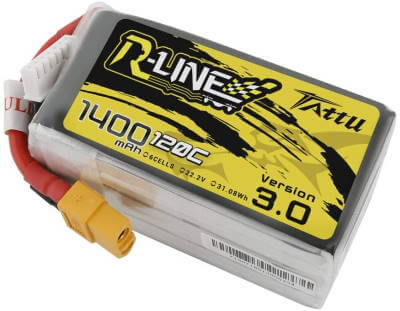
LiPos are such a topic of their own, and over time even individual packs gain your affection, despite having three identical ones next to them. Each pack is a bit individual, needs care (how you charge it, what voltage you store it at, etc.), and when buying it, you can often only rely on the manufacturer’s reputation. But there is a kind of consensus with the batteries from Tattu (which were also recommended above), only this one is two cells more (6S) and in the professional version: Tattu R-Line (“R” like Race). With the 120C, you can start a car without problems.
Price & Availability
LiPo charger: ISDT D2 Mark 2
As with the package above, I also recommend ISDT here — just a bit bigger, so parallel charging is also possible. And also, with a built-in power supply – I find that simply more practical.
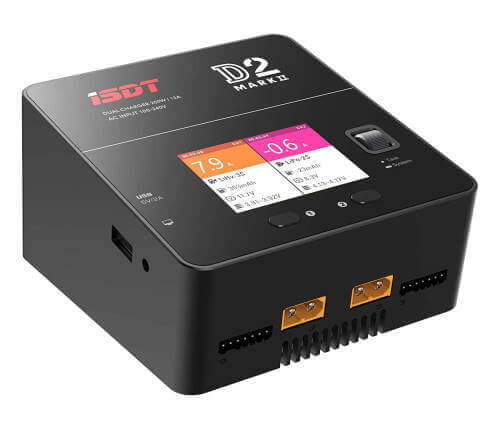
Prices & Availability
The DJI FPV Combo
Let’s talk about the Elephant in the Room: DJI FPV Combo.
As the introduction of the DJI FPV system (which we use in the package above) hadn’t already caused enough controversy in the FPV world. The DJI FPV Combo with the DJI FPV Drone splits the community into two almost irreconcilable camps.
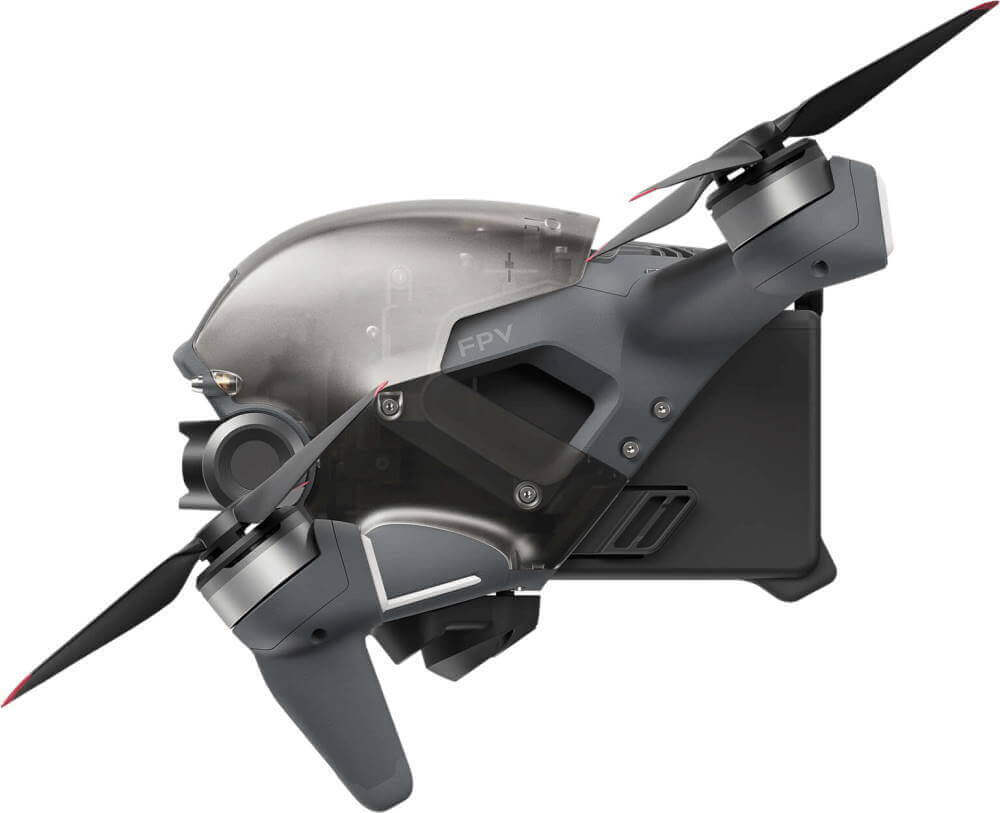
I’ll try to summarize the most important things about the DJI FPV complete package:
- Is this the fastest way to get started with FPV? => YES!
- Expensive => YES!
- Is the DJI FPV Combo worth the price => YES and NO!
- Is DJI’s FPV Drone stable enough for an FPV racer => NO! (Not kidding, this thing breaks: if you want to fly close to objects – and you do if you want to do FPV “the right way” – this thing will explode faster than you can say [insert something random here]).
- Can I save a lot of time with research, building and customization => YES!
- Can I slowly “work my way up” flight-wise if I’m a beginner / already have a DJI drone => YES!
- Do I pay exorbitant prices for the batteries (but they are safer) and other accessories => YES!
- Do I get the convenience I expect, like “return to home”, “unpack and go” or an “emergency pause” button? => YES!
- Do I get fantastic range and very long flight times for an FPV racer? => YES!
- Do I give up the openness to use different systems, can I no longer repair myself, thus betraying a little the basic values of the RC / FPV world and put myself in the dependence of a single manufacturer? => YES!
- Is this the best package on the market for cinematic shots with dynamics? => YES!
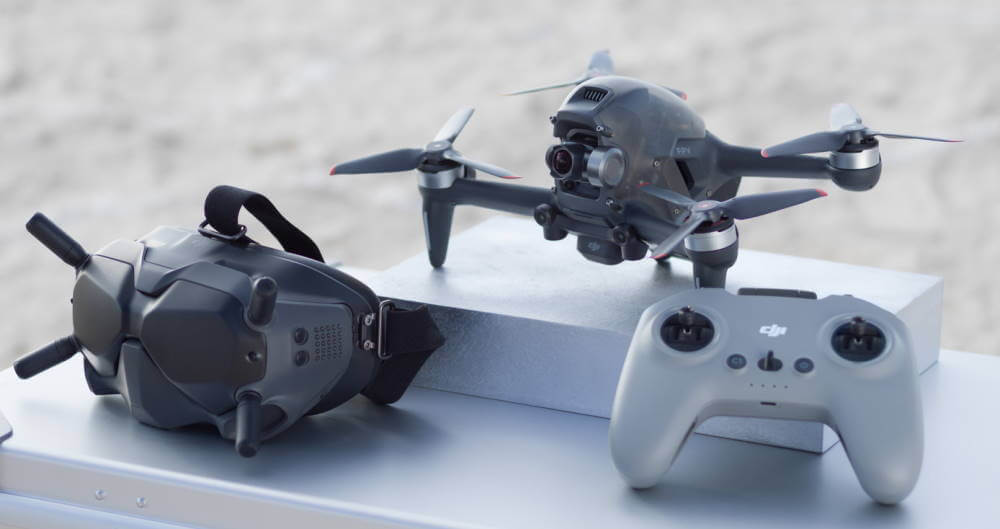
IIf you now say to yourself: I have the money and want to fly FPV as fast as possible, this is certainly a good option. And the DJI FPV Combo certainly has the best recording capacities “out of the box” that you can wish for.
With the upper Nazgul packages, you first have to mount a GoPro and edit with tools like ReelSteady Pro to get to that level. And for the world between DJI camera drone footage and hardcore FPV footage, i.e., “cinematic FPV,” the DJI FPV Combo is unbeaten. And here, you can have unbelievably long flight times compared to approximate flight characteristics of a classic FPV drone paired with a smart camera.
However, suppose you are interested in racing, flying through forests and abandoned buildings, or proximity (flying extremely close to objects and buildings or just above the ground). In that case, this probably isn’t the way to go. One crash, and you’re in full dependency on DJI repair. With the iFlights from above, you have to be able to break something in the first place (the carbon frames can take an incredible beating), and if you do, you’ll quickly learn how to replace a motor or arm on your own.
If you don’t want that (self-repair) but want a real FPV RTF set (“Ready to Fly,” i.e., an FPV drone complete set with goggles) without reading up on radio protocols, LiPo batteries, etc. — then there is almost only the DJI option. And compared to the TinyWhoop complete package (also ready to fly), the DJI complete system can record awesome videos, while the TinyWhoop is only there for the fun of flying.
As I said, this is almost a matter of faith — for some, it is the best FPV drone for beginners; for others a crime against the hobby. You have to decide for yourself.
DJI FPV Combo
Pricing & Availability:
And what about building it yourself?
YES, MAN!!! THIS is actually the real right way to go in FPV. Simulator practice, then build it yourself. And there I would also rely on local stores to buy the parts – you have an entirely different contact and delivery time, if something may not be OK.
Keywords
- FPV Drone Complete Set
- FPV Drone Complete Set with Goggles
- FPV Drone Beginner
- Best FPV Drone for Beginners
The predecessor (2021) of the “Best entry-level drone.”
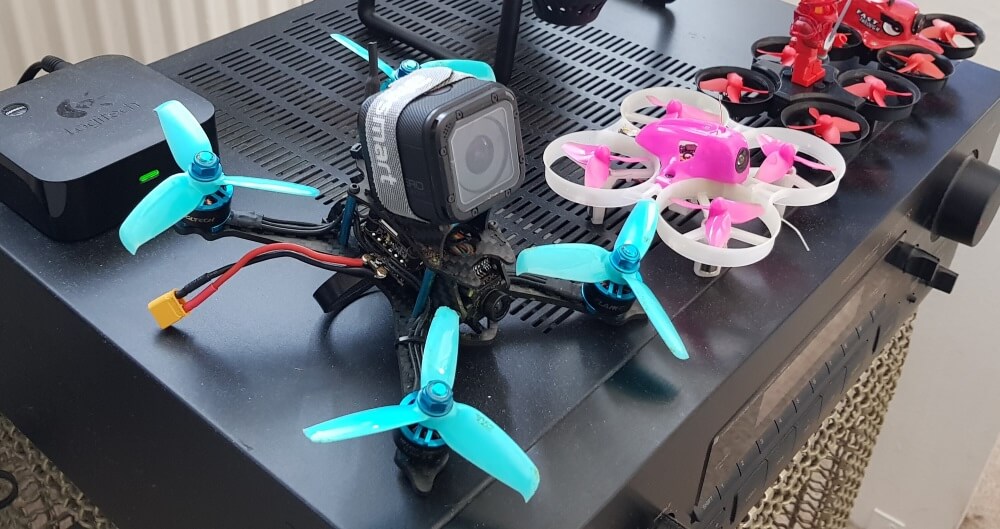

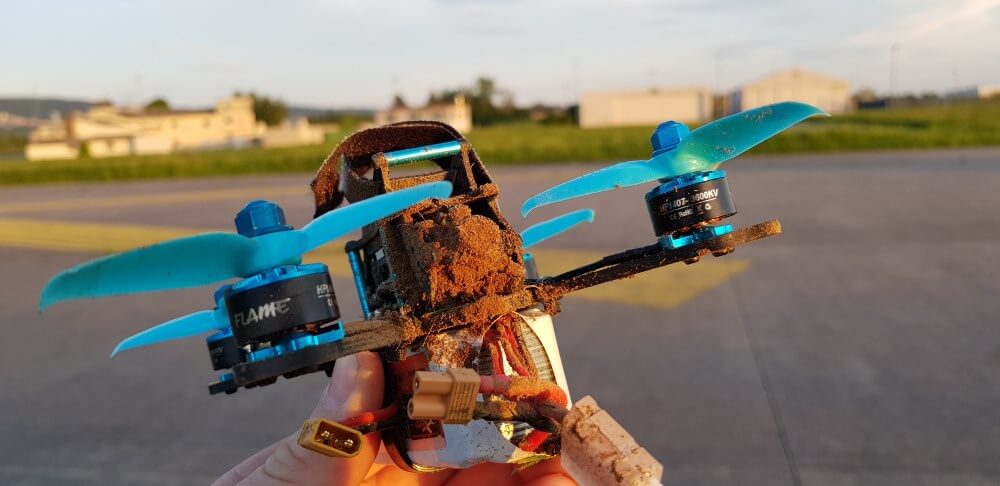
The old 2021 shopping list
Quad: HGLRC XJB145 | $165 | Amz BG AE
Glasses: Eachine EV800 | $59 | Amz BG AE
Remote: Flysky FS-i6S | $71 | Amz BG AE
Receiver: Flysky FS-A8S | $12 | Amz BG AE (only needed for PNP, not for BNF)
Batteries: Tattu 11.1 V 3S 850mah XT30 | $18 | Amz BG AE
Power supply: Charsoon DC-4S | $14 | Amz BG
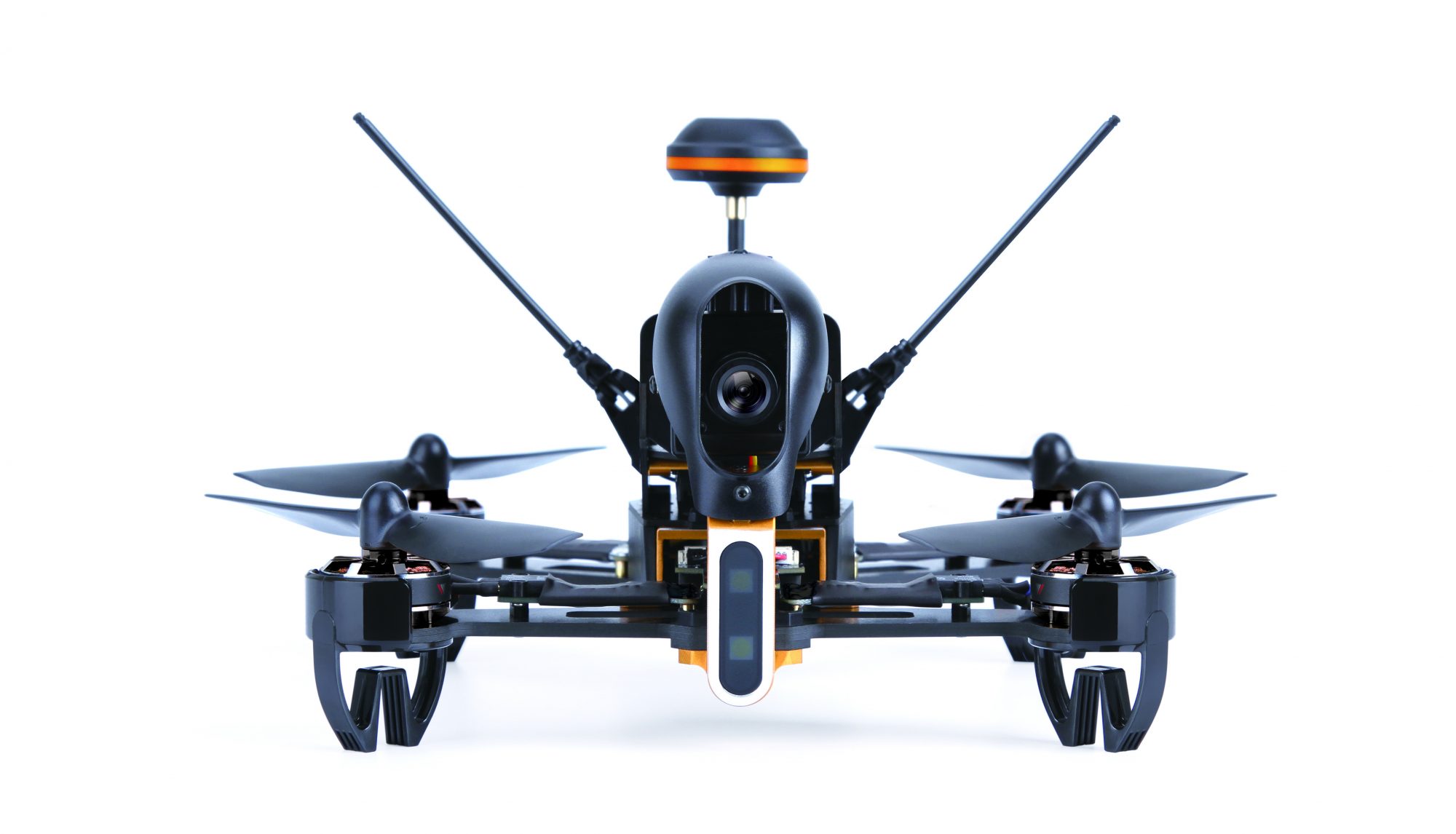
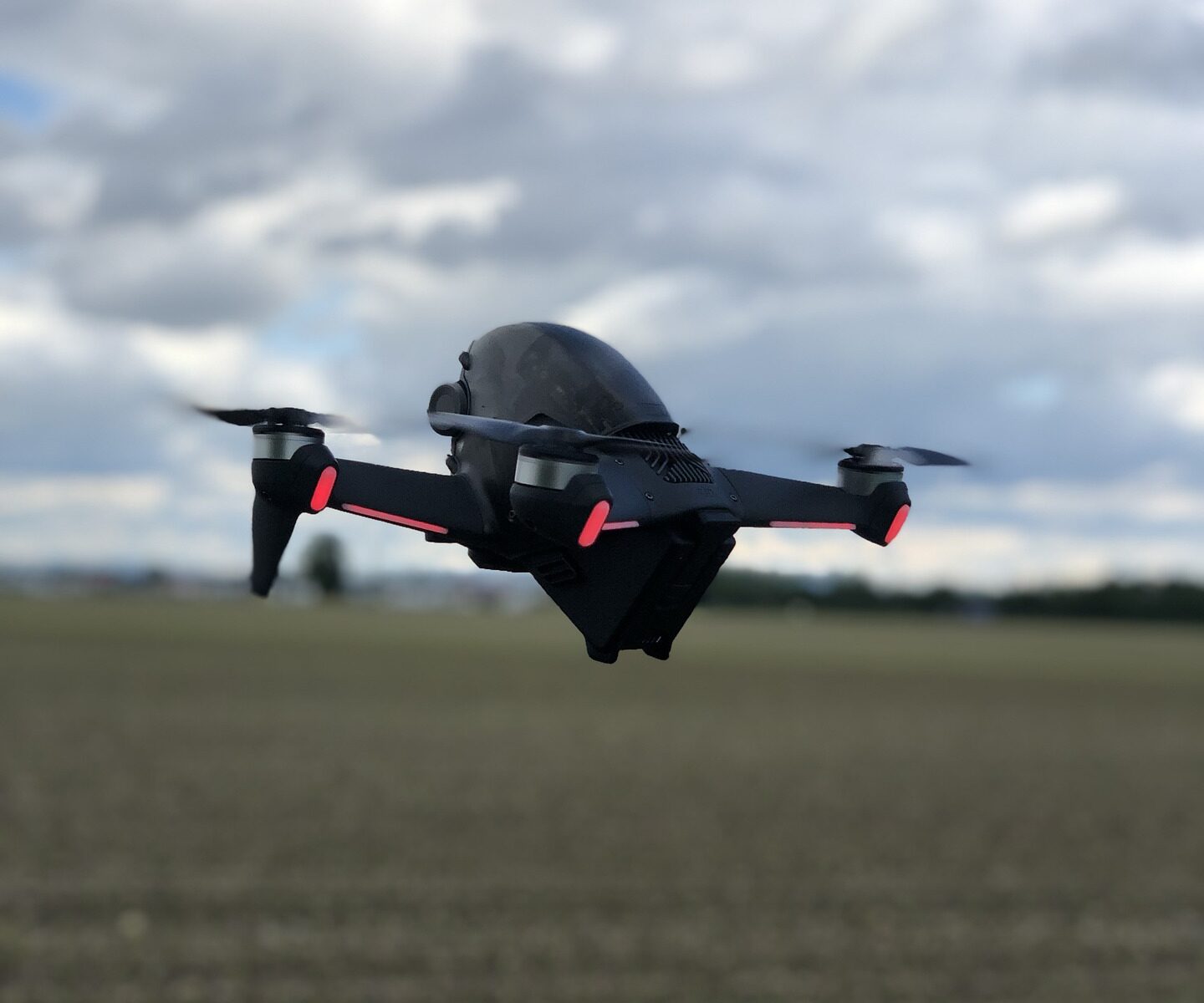
10 Replies to “THE BEST BEGINNER DRONE (FOR FPV RACING OR FREESTYLE) 2023”